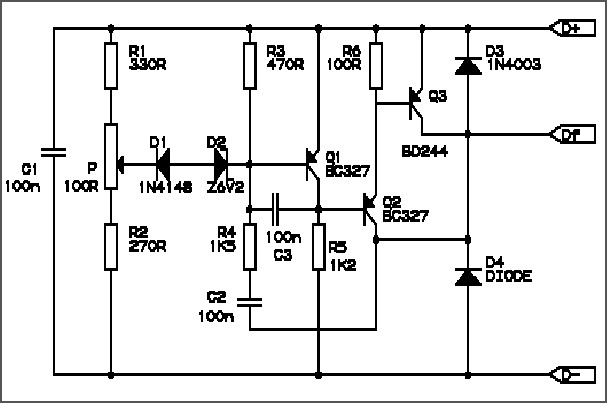Schematic diagram of one version of the Electronic Voltage Regulator
https://bmwmotorcycletech.info/VRschematic.htm
23B
© Copyright 2020, R. Fleischer

D+ Regulator input, from output of diode board and to alternator telltale lamp. Df Goes to one brush/slip ring of the alternator rotor. D- Goes to the other brush/slip ring of the alternator rotor, and to bike ground via a brown wire. |
PARTS: R1 330 ohms resistor Q3 BD244 series transistor. BD244 rated at 45V; BD244A rated at 60V; BD244B rated at 80V, BD244C rated at 100V. Rating of all are 6 amperes and Vce-sat is max 1.5V ***Snowbum says that if replacing Q3, a higher current rated transistor is a good idea, such as 10 ampere. A lower Vce-sat would also be helpful for longer life. D1 1N4148 diode |
© Copyright 2020, R. Fleischer
Return to Technical Articles LIST Page
Last check/edit: Wednesday, December 09, 2020